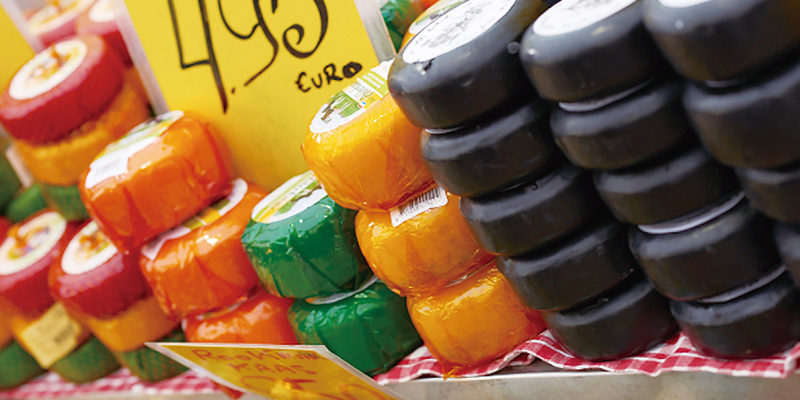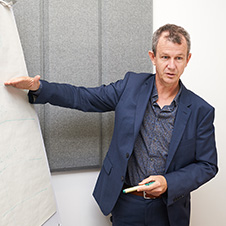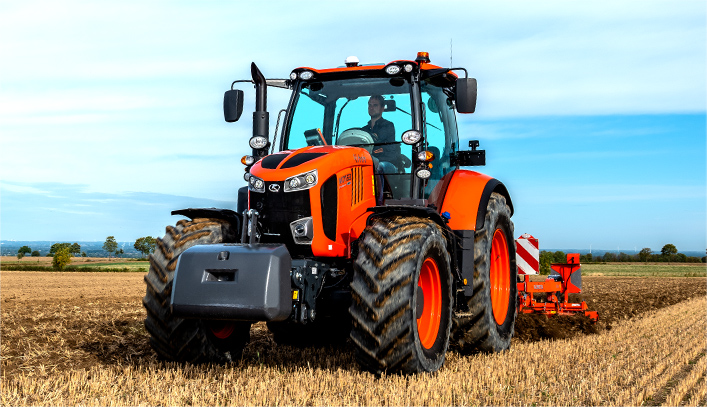01
What is “Precision Farming”?
A look at precision farming in the Netherlands today

Higher yield/quality, lower environmental load

The definition of “precision farming” varies internationally. The U.S. National Research Council (NRC), for example, defines it as “a management strategy that uses information technologies to acquire and analyze data on crop production, and supports decision-making by scientifically elucidating how factors are interrelated.” The Home-Grown Cereals Authority (HGCA) of the U.K.'s Department for Environment, Food & Rural Affairs (DEFRA) says that it is “a method of crop management by which areas of land or crop within a field are managed with different levels of input in that field.” For Kubota, “Precision farming is a farm operation technique aimed at minimizing costs for fertilizers, chemicals, water, and fuel and maximizing yields by utilizing data. It also aims to improve the taste and quality of agricultural products, ensure traceability, hand down knowhow, and reduce heavy labor.” Precision farming was formerly focused solely on state-of-theart technology, but it is now regarded as an advanced technique for farm management. It takes a comprehensive approach to maintaining soil fertility, increasing the yield and quality of crops, and reducing the environmental load by using factual records to finely manage intricate and varied types of farmland.
Supporting the implementation of precision farming are tools featuring information and communications technology (ICT), the Internet of Things (IoT), artificial intelligence (AI), and other cutting-edge technologies. A wide variety of support tools have been developed, including field sensors for gathering data on the weather and other environmental factors, soil sensors, drones for remote sensing of the growth situation, combine harvesters equipped with yield monitors, and farm machinery featuring GNSS*1 technology that is capable of variable control of fertilizers and chemicals. Precision farming began to spread rapidly in the late 1990s, when one implement after another started to be developed. In the U.S., which is often regarded as the birthplace of precision farming, the main driver behind its diffusion was its higher productivity, due to the fact that there are many large-scale farms there that benefit most from its cost reduction effects. Meanwhile, in Europe, precision farming is being introduced for the purposes of environmental conservation by optimizing the use of fertilizers and chemicals, as well as increased productivity, and proactive initiatives are being undertaken in the U.K., France, Germany, and elsewhere.
-

With one-quarter of its land area being reclaimed land below sea level, its capital city of Amsterdam has an extensive network of canals.
The world's 2nd largest agricultural exporter – What makes the Netherlands' farming so competitive?
The Netherlands is a country known for advanced initiatives in precision farming. Some 40% (or 18,400 km2) of its approximately 41,500-km2 total land area is farmland, and crops are cultivated in a narrow range of arable land (with nearly half of its farmland consisting of pastures). Despite these less-than-ideal conditions, the Netherlands is the second largest exporter of agricultural produce after the U.S. In 2016, the country's agricultural exports totaled roughly US$96.5 billion (compared with US$135.6 billion for the U.S.).*2 Following the Netherlands are Germany, Brazil, and China, the latter two of which boast vast expanses of arable land, thus making the Netherlands' inclusion in the list even more conspicuous. The agricultural sector in the Netherlands is highly competitive internationally, with some of its largest export items being tulips and other flowering plants (i.e. ornamental plants), prepared foodstuffs, tobacco, and cheese. The country possesses a unique model of agriculture that is akin to processing trade, in which they import raw materials and export them after adding value. A look at agricultural production output will show wheat and potatoes ranking high, but closer inspection of agricultural data on the Netherlands will show high added value (gross profit) from fruits and vegetables, such as tomatoes and cucumbers, dairy products from grasslands where high-yield herbage is grown, and intensive stockbreeding, such as hog and poultry raising, as well as from flowering plants.
One factor underpinning the Netherlands' impressive agricultural results is the country's government-sponsored projects to bring about innovations in agricultural and food industries. In the municipality of Wageningen, located in the central eastern province of Gelderland, one can find the industrial cluster known as the “Food Valley” region, where agricultural research and development is carried out jointly by the public and private sectors under the lead of Wageningen University & Research, an internationally recognized authority on agricultural research. Precision farming is one of its key project themes. We were fortunate enough to have the opportunity to interview Dr. Corné Kempenaar, who studies precision farming at Wageningen University & Research.
-

Thanks to its large quantities of raw milk (cattle) production, cheese is one of its key exports. -

The Netherlands is the world's largest exporter of tulips and other flowering plants.
Precision farming is essential for sustainable agriculture

Professor, Wageningen University & Research
Professor Kempenaar started his agriculture research in the fields of cereal science and crop epidemiology and, by extension, he became engaged in precision farming research. He is now one of the leading authorities on precision farming in Europe.
“Behind the rapid diffusion of precision farming is the fact that it is necessary for sustainable agriculture. Precision farming is extremely effective for gaining a high yield from scarce resources and developing agriculture that is resilient against rapid climate changes and reduces environmental load. As such, precision farming has the potential to realize sustainable agriculture and offer solutions to food problems the world over.”
According to Professor Kempenaar, farming in the Netherlands is distinguished by the fact that it achieves high productivity with just a small amount of land, and precision farming has become rapidly diffused thanks to its compatibility with the country's pursuit of efficiency. However, he also pointed out that there are major challenges ahead to the further diffusion of precision farming.
“Precision farming is a knowledgeintensive farming system. We already have an abundance of tools and technology necessary for putting precision farming into practice, but the problem is that the situation is not yet well understood by farmers. They wonder how they can use the system, or how they can go about putting to use the data gathered by sensors. I feel that it is necessary to provide training and guidance through the precision farming promotion program and other means.”
As one can see, precision farming is spreading across the globe, so what kind of approach is Kubota taking? Rather than simply moving ahead with precision farming, Kubota has gone one step further to come up with its own advanced concept of “smart farming,” and it has already implemented pioneering experiments in the rice farming market of Japan.
- *1.A Global Navigation Satellite System (GNSS) is a positional information measurement system using satellites such as the Global Positioning System (GPS) of the U.S. and Galileo of Europe.
- *2.Statistics from the United Nations Conference on Trade and Development (UNCTAD)
Overview of Agriculture, Forestry, and Fisheries in the Netherlands (excerpts from the Ministry of Agriculture, Forestry and Fisheries of Japan website)
- The Netherlands’ land area is about the same as that of Japan’s island of Kyushu. Among its total land area, 44% (or 18,400 km2) is farmland.
- Located in wetland areas along the lower Rhine River, one-quarter of its land area is reclaimed land below sea level.
- Making the most of its small land area, the country focuses on farming techniques that maximize revenues even for small farmers through production of flowering plants and vegetables in greenhouses and livestock (including dairy farming). Its farm produce is exported primarily to the European Union market.
- Farm produce exports total US$90.9 billion, the second largest such figure after that of the U.S. Three quarters of its exports are free of duty, with the main export destinations being European Union member countries with few quarantine restrictions (2013). Farm produce imports account for approximately two-thirds of its total exports. It is active in processing trade and intermediate trade.
- The average farm area is 0.274 km2 (2013).
- Its main agricultural and livestock products are flowering plants (tulips, etc.), potatoes (world’s largest exporter), onions, tomatoes (world’s second largest exporter), cucumbers, bell pepper, raw milk (world’s second largest cheese exporter), and pork (according to 2013 rankings).
